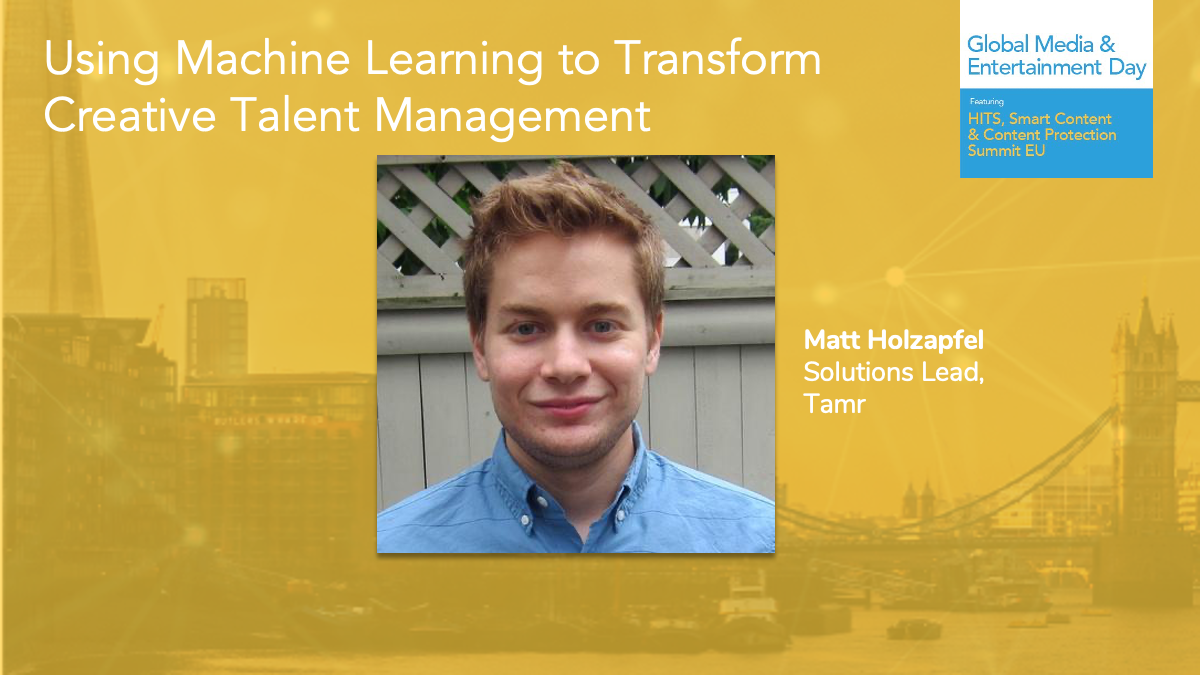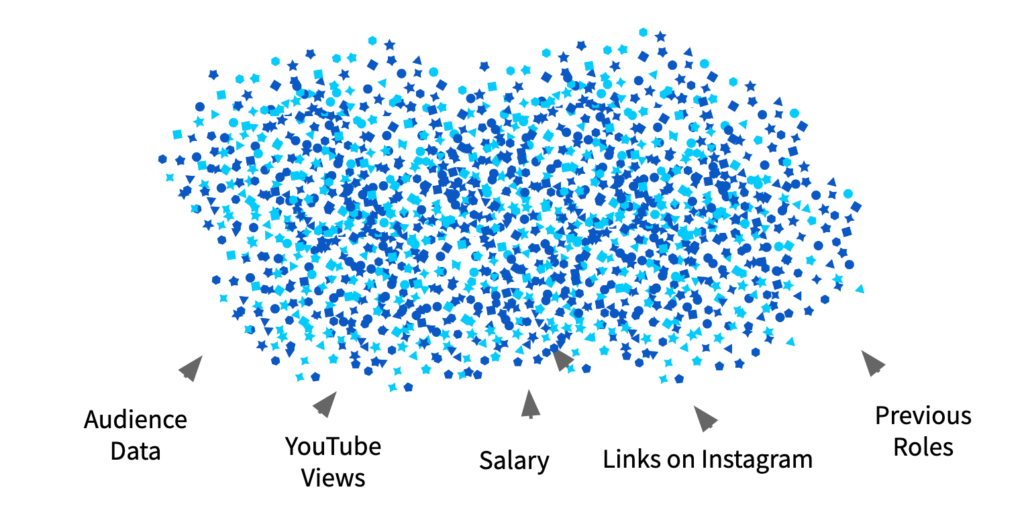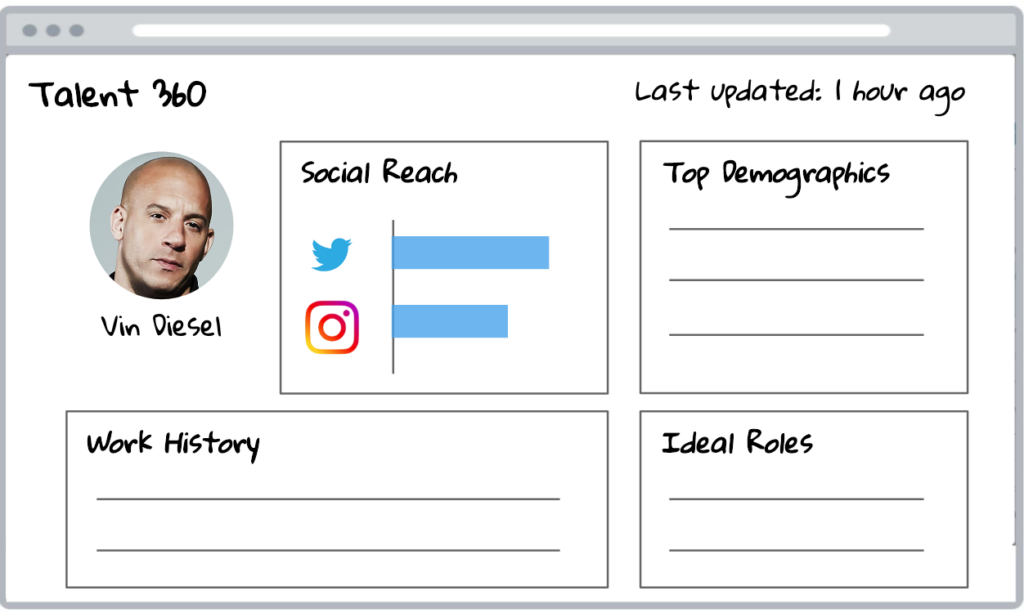Exclusives

M&E Day: Machine Learning is Transforming Creative Talent Management, Tamr Says
Story Highlights
In an industry that runs on storytelling, the best talent managers are those who can craft compelling stories to find the right opportunities for their clients — and machine learning (ML) can be used today to entirely transform creative talent management by making effective use of all the data available, according to Matt Holzapfel, solutions lead at enterprise data unification and data mastering specialist Tamr.
Stories today are increasingly informed by huge amounts of data: hundreds of datasets, millions of records and billions of data points from sources inside and outside an organization. By using ML to serve up analytics-ready data from disparate data, creative talent management firms can create very human stories with mutually successful outcomes for clients and media companies–time and time again.
“Within every company, the biggest assets are the people within that company – and nowhere is that more true than within the entertainment industry, where truly the assets are the people – the talent, the musicians, the actors – who make it all possible,” Holzapfel said July 2 during the AI, ML, CX & Supply Chain breakout session “Using Machine Learning to Transform Creative Talent Management” at the Global Media & Entertainment Day event presented live, virtually, from London.
“At the core of what the industry is trying to do and the problem that we’re trying to solve is how do we take all this great talent and all this great content and these great content ideas, match them up correctly and then tie that to the appropriate audience so that regardless of who you are as a consumer, that you get the right content with the right talent every time,” he told viewers.
“And at the core of it is really [a] data problem,” he noted. For an actor such as Vin Diesel to understand who his audience is and what type of content he should focus on, “you really need complete data about his social reach, his work history, who he appeals to” among the audience, he said.
 “But the challenge is that there’s no single source which has all the answers,” he noted, explaining: “It’s this jigsaw puzzle of piecing together all of these different data sources about audiences, about social media, about internal data for your relationship with the client that’s needed in order to really answer these questions – and not just answer them, but answer them quickly and be able to move at the speed of the industry.”
“But the challenge is that there’s no single source which has all the answers,” he noted, explaining: “It’s this jigsaw puzzle of piecing together all of these different data sources about audiences, about social media, about internal data for your relationship with the client that’s needed in order to really answer these questions – and not just answer them, but answer them quickly and be able to move at the speed of the industry.”
After all, today, “just simply putting the data together is not enough,” he said, adding: “You can get all of that data and then once you go through all the work of putting it together, you can have it in once place. But then you find that the underlying data itself is messy and doesn’t join together nicely. And so being able to answer these basic questions often requires a lot of manual effort every single time. And so it’s very difficult to go from client to client and be able to answer questions about what is this client worth for this individual piece of content because when the data is scattered in two, that data is messy.”
However, “luckily, the advancements that have happened within technology more generally have really made this a more tractable problem,” he pointed out. “It’s now possible to move away from the challenge that we’ve had in the past of it taking weeks to answer a basic question to one where now you can answer these questions in minutes,” he told viewers.
“The core of what this is enabling is for companies across the media and entertainment industry – whether it’s agencies or studios – to become much more data-driven because before, when it was these very manual, human-driven processes, it’s hard to trust the data and it’s hard to expect that the data is going to be available when you need it,” he said.
Now, with advancements in technology including cloud computing and ML and “just the broad data management tooling, it’s much easier to make this possible,” he noted.
He went on to explain how Tamr helped Creative Artists Agency use ML to solve its problem. The company needed to get its time-to-insight down from two weeks to two seconds and “they were willing to rethink their entire data management stack” to do it, he said, adding the firm “wanted to move away from their legacy systems and into something that was cloud-native, that was using best-of-breed tools – tools like … the ones in Azure” to Extract, Transform, Load (ETL) data.
 Now, their data is much more “readily available” and it is not reliant on just one tool, but several tools and data sources in a more automated way using ML, he said. It is also “using cloud components in order to manage storage and compute… that is very easy to scale up and down,” he noted.
Now, their data is much more “readily available” and it is not reliant on just one tool, but several tools and data sources in a more automated way using ML, he said. It is also “using cloud components in order to manage storage and compute… that is very easy to scale up and down,” he noted.
The resulting insights also keep pace with the industry by helping to identify new potential clients by understanding every agent’s “sweet spot,” market the right content to the right person, and “level the negotiating playing field” by understanding exactly what every client and title is worth, he said.
To view the presentation, click here. To view the presentation slide deck, click here.
The fourth annual M&E Day event, presented by the Media & Entertainment Services Alliance (MESA), featured mainstage panels and more than 15 breakout sessions, covering the latest it data, cloud, IT and security across the media and entertainment technology ecosystem.
The event was presented by Caringo, with sponsorship by Convergent Risks, Cyberhaven, Richey May Technology Solutions, RSG Media, Signiant, Whip Media Group, Zendesk, Seagate Powered by Tape Ark, Sony New Media Solutions, 5th Kind, ATMECS, Eluvio, Tamr, the Audio Business Continuity Alliance (ABCA), the Entertainment Identifier Registry (EIDR) and The Trusted Partner Network (TPN).









